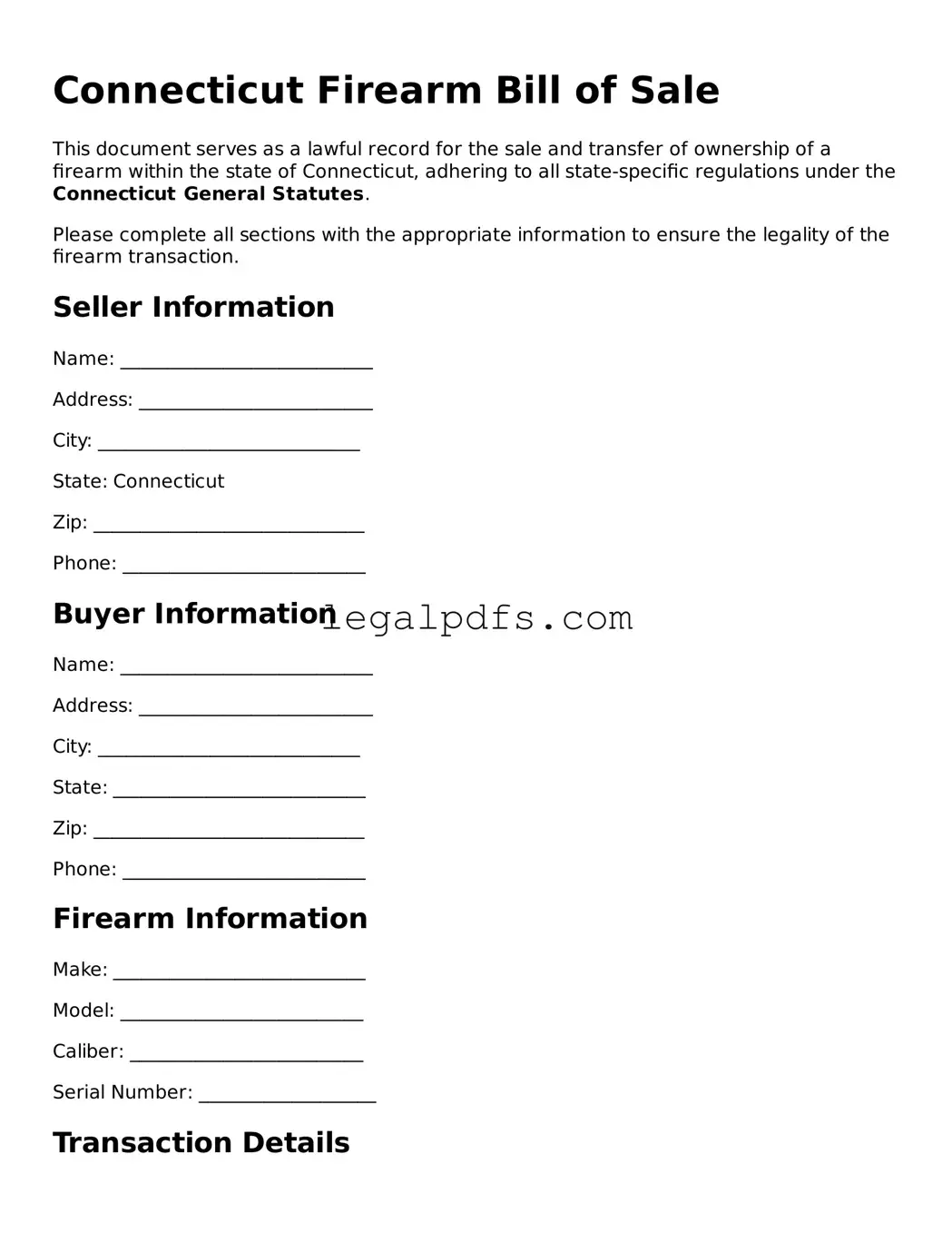What is a Connecticut Firearm Bill of Sale form?
A Connecticut Firearm Bill of Sale form is a legal document that records the sale or transfer of a firearm within the state of Connecticut. It outlines the details of the transaction, including information about the buyer, seller, and firearm, to ensure a clear and legal transfer of ownership.
Is a Firearm Bill of Sale form required in Connecticut?
Yes, while Connecticut law emphasizes the necessity of thorough background checks and proper documentation for firearm transfers, a Firearm Bill of Sale serves as a crucial record of the transaction. It provides evidence of the transfer and helps both parties prove the legality of the sale.
What details should be included in a Connecticut Firearm Bill of Sale?
A Connecticut Firearm Bill of Sale should include the date of the sale, the full names and addresses of both the buyer and seller, a detailed description of the firearm (including make, model, caliber, and serial number), the sale price, and signatures of both parties. It may also include an acknowledgment of the firearm's condition and any warranties or representations.
Do both parties need to sign the Connecticut Firearm Bill of Sale?
Yes, for the document to hold legal value, both the buyer and the seller must sign the Connecticut Firearm Bill of Sale. These signatures confirm the agreement and consent to the transaction, making the document a binding record.
Does the Connecticut Firearm Bill of Sale need to be notarized?
While notarization is not a mandatory requirement for a Firearm Bill of Sale in Connecticut, having the document notarized can add an extra level of legal validation. It certifies that the signatures on the document are genuine and can help protect against disputes or fraud.
How does the Firearm Bill of Sale protect the buyer?
The Firearm Bill of Sale protects the buyer by providing a documented history of the firearm's ownership transfer. It ensures that the buyer has legal proof of purchase and ownership. Additionally, it can serve as evidence that the buyer obtained the firearm through a legal transaction, which is particularly important if the firearm's history is ever questioned.
How does the Firearm Bill of Sale protect the seller?
For the seller, the Firearm Bill of Sale is equally important. It offers legal protection by proving that the seller transferred the ownership of the firearm to the buyer. This can be crucial if the firearm is later used in a way that could implicate the seller, as the document can demonstrate that the seller is no longer responsible for the firearm's use.
Can a Connecticut Firearm Bill of Sale be used for all types of firearms?
Yes, a Connecticut Firearm Bill of Sale can be used for all types of firearms, including rifles, shotguns, and handguns. However, it’s important for both parties to ensure that the specific transfer complies with all state and federal firearms laws, including those related to the specific type of firearm being sold or transferred.
Where can I find a template for a Connecticut Firearm Bill of Sale?
Templates for a Connecticut Firearm Bill of Sale can be found online through legal document services, or potentially through local firearm dealers or law enforcement agencies. Ensure any template used complies with Connecticut state laws to guarantee it meets all necessary legal criteria for a firearm transaction record.
